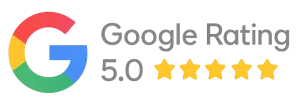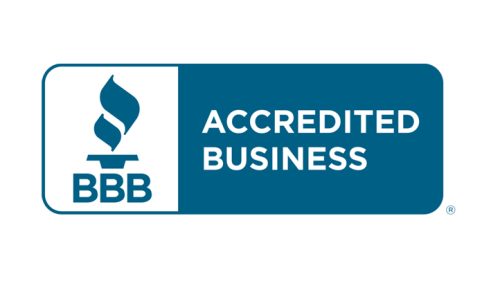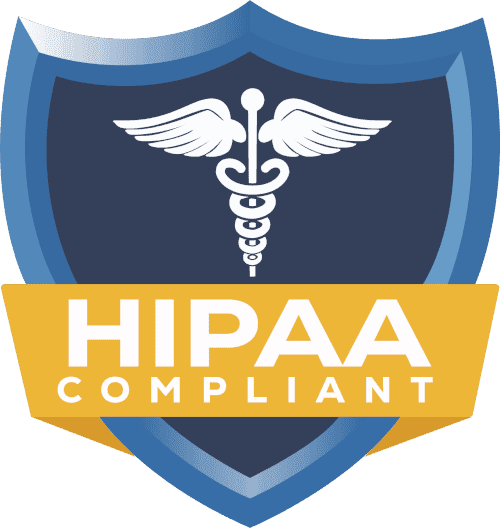Breaking Down the Hidden Costs of CAQH Credentialing

Introduction: Why CAQH Credentialing Isn’t Always “Free”
And those who say CAQH is free are correct; no registration fee is received when creating a CAQH ProView profile and maintaining the profile. But “free” can be misleading. CAQH provides its ProView portal without charge to the provider, but over time, the administrative burden, as well as indirect costs of CAQH credentialing, are about to add up. In short, CAQH will not cost you anything, but overall, the process can cost your practice huge amounts of money unless done in an effective manner.
This posting breaks down the direct and, more importantly, the indirect costs of CAQH credentialing, how they impact your bottom line, and how a well-managed partner like Credex Healthcare would deflect the unwarranted cost and loss of revenue.
What Is Included in CAQH Credentialing Cost?
Surface-wise, CAQH ProView is as simple as completing a profile and relaying the authenticated information to the insurers and health plans. The channel gathers demographic, education, licensure, and malpractice data from providers in ways that the payers can retrieve a consistent submission instead of searching and retrieving the documents in offices. That centralization is an excellent consideration; however, the creation of a profile and its upkeep are associated with numerous factors that you should consider when calculating cost:
Initial setup and data
Gathering diplomas, licenses, board certificates, malpractice statements, employment records, scanning and uploading files; typing of dates and addresses of practice. It may take hours, even when it comes to one provider.
Upload of documents and review of CAQH
The check of documents uploaded may be conducted by CAQH and might be approved or disapproved; you have time to fix some mistakes. CAQH typically has a couple of business days of document checks.
Authorizations and plan attachments
You ought to make each plan or health system accessible to your profile; you will proceed to make follow-ups when the payers require additional verification.
Attestation (re-attestation) cycles
The CAQH requires attestation of your profile periodically (after some number of cycles) to determine that it is up-to-date, and it is a recurrent administrative action, which, again, should be planned and scheduled in advance.
Those are hard dollars when you are able to include the salary of the staff, hours that were lost by the clinician, and the opportunity cost of the lost revenue.
Hidden Costs Most Providers Overlook
These are the commonest concealed line items that are largely forgotten by practices when they presume the existence of CAQH.
1. Application management (person-time)
Documentation, completing fields on the portal, signature follow-ups, and follow-up follow-ups are time-consuming. An administrative workload of a start of 6-12 hours by a single primary care provider is enough to raise an alarm – multiply the number by your hourly bill, front-office workers, or practice managers, and the number will shoot off the scale.
2. Refusal to submit and re-submit
CAQH does not approve the documents based on formatting or size, the lack of fields, or the wrong type of document. With each rejection, they require a correction and re-uploading, and repeat the process a lot of times when the first submission was not carried out in a proper format. Every re-upload is a waste of both the time of the staff and credentialing time, which increases the time spent by your provider waiting to bill some payers.
3. Expiry and Due Dates of Attestation
CAQH requires re-attestation to be done on a periodic basis (typically every 120 days, but some states, like Illinois, have different periods). A lapsed profile can be caused by the attestation deadlines, and this can lead to the suspension of the payer processing or relying on submitting the claims, which can affect the claims processing.
4. Re-validations of payers and PECOS
Some of the aspects enrolled by Payers are not CAQH (as in the case of Medicare PECOS), and revalidation (as in the case of Medicare five-year revalidation) is an administrative procedure. Such requirements might lead to a freeze of the billing privileges of Medicare and costly corrections in a short period of time.
5. Slowness of reimbursements: opportunity cost
An apparently dangerous undercost is a revenue gap. When credentialing delays the addition of a provider to a payer panel, the provider will not get the given contracted payment or might get no payment whatsoever for the services rendered in the given period. This is felt with little business and lean margins – two or three late claims or rejected claims will grow exponentially.
6. Vendor third-party assistance expenses
Many vendors and consultants receive a flat fee or hourly or per-provider charges to set up CAQH, attestation reminders, and follow up with payers. These are not entirely without reason, but when it comes to paying for low-quality vendor support, you might still find yourself rejected or delayed and have to pay twice – once to the vendor and the second time to corrections and refunds.
How Hidden Costs Affect Medical Practices Financially
This is reflected in the three financial implications where the concealed expenses are accrued to the balance sheet of profits and losses:
- Cash flow interference: Delays in credentialing will cause a delay in reimbursements. It may lead to delays in receiving hundreds of thousands of dollars of receipts since it has made a dent in the paneling of a high-volume clinician over a span of two weeks.
- Denials of claims and administrative recovery expenses: This would mean that any erroneous or incomplete provider data would raise the chances of claims being rejected. The administrative side of the clinic is time-consuming with submissions and appeals that may require the assistance of a specialist biller.
- Patient churn and lost business: With a provider not being in-network with the commercial payers, the patients have the option of visiting an in-network provider. When a practice is losing referrals or in any way losing new patients, the short-term cost of credentialing is lost when the long-term revenue effects take hold.
Credentialing is a prophylactic expenditure: pay now a little to establish and support appropriately, and to save a very large amount in the future.
Cost Comparison: DIY vs. Professional CAQH Credentialing
DIY (In-house)
Pros:
- It is perceived as having less direct cost (there are no fees paid to vendors).
- Total in-house possession of the PII and documents.
Cons:
- Hidden Labor and Opportunity Cost.
- There are more rejections and duplicates due to a lack of credentialing experience by the team.
- Awasted time on non-revenue-generating activities and patient-facing duties.
Professional Credentialing / Outsourced (e.g., Credex Healthcare)
Pros:
- Reduced the time of turnaround by more competent teams with extensive knowledge of payer-related guidelines and common rejections.
- Frequent attestation notices and profile maintenance to prevent lapses.
- Reduced rejection of claims and faster paneling – this is capable of boosting cash flow.
- The open costs can be less than the internal work cost + risk.
Cons:
- First or frequent service fee.
- Choose an existing partner – weak vendors can only increase expenses without increasing output.
It should be modeled in a real-life financial comparison in which: hourly rates of the staff x hours saved + reduction in denial rates x average claim value = is compared with the vendor charges. In most cases, outsourcing to a reputable credentialing firm is a cost-efficient decision within a few months due to faster paneling, reduced denial load, and minimized administrative baggage.
How Credex Healthcare Helps You Save on CAQH Credentialing
Credentialing at Credex Healthcare is a very limited process. That is how we transform a free portal into a cost-saving strategy.
1. Open pricing, no surprises
We provide direct prices for the establishment of CAQH, attestation administration, document gathering, and follow-up of the payer. None of the charges of the secret resubmission, and we explain to the clients what it entails so that they spend on it without fear.
2. Expert document preparation and uploading
Our credentialing experts create the documents before uploading based on the CAQH specifications, and this helps save time and the ping-pong. CAQH typically requires business days to go through the documents; the submissions are organized in such a way that the review cycles are achieved in a fast and non-messy manner.
3. Active attestation windows and automated reminder
It is a re-attestation that is to be re-done periodically (typically after every 120 days). Automatic notifications to the providers and staff, who would have been reminded that they have attestation windows that need to be closed. That prevents lapses that may derail payer processing.
4. End-to-end payer follow-up (PECOS and Medicare re-validation assistance)
CAQH is not an ecosystem in itself. CAQHs are uploaded to PECOS, and payer-specific enrollment requirements are calculated and checked against, and Medicare revalidation dates are checked to make sure nothing passes between the cracks. The revalidations of Medicare are usually performed at a five-year period, and they should be followed in a different manner.
5. Maintenance and profile updates on a monthly basis
Licenses are replenished, the address is changed, and new sanctions/claims might need clarification. Continuous profile management by us is represented in a manner that a single administrative process is never made into a fire drill.
6. Measurable ROI
These measures involve time saved, rejections avoided, and a reduction of paneling times. A payoff that is typical of our clients includes the reduced rates of denials, faster time-to-panel, leading to improved movement of claims, and eliminating administrative burdens.
Final Thoughts
CAQH ProView is a highly demanding and free program that ensures the transfer of data between payers; nevertheless, the assumption that the program is absolutely free is semi-true. The price may be hidden in the number of staff hours and time wasted in rejecting an upload, a lack of attestation due date, a slow reimbursement, or even independent payer system requirements like PECOS, which have their own schedule and revalidation tendencies.
Until you are a large or large-mid practice, the wisest financial step you can take is to treat the matter of credentialing as a revenue protection, but not a clerical one. It might be the employment of a credentialing professional in an organization or one of the trustworthy vendors that provide clarity of cost, proactive maintenance, or provide measurable results. Credex Healthcare worries over preventing resubmitters, attestations that are missed, as well as payer follow-ups that can be avoided, in order that your clinicians serve the patients, and your practice can get paid on time.
FAQs
Is credentialing by CAQH totally free?
Yes, CAQH ProView does not charge any registration fee to providers in order to build or maintain a profile. However, there exist actual indirect costs (time spent by staff, document navigation, loss of potential caused by delays) which must be considered by practices.
What are the CAQH credentialing hidden costs?
Other costs that are not obvious are staff hours to enter the data, time to revise a rejected document, attestation fines (lapse of profile), waiting to receive reimbursements, and vendor support fees in case of outsourcing. The nature of these indirect costs can easily surpass the platform’s free cost.
What is the rate of re-attestation of CAQH?
Typically, CAQH ProView has a re-attestation period of 120 days (not all states are alike). CAQH will provide reminders, but the practice will still be liable to do the same in a timely manner.
Can CAQH credentialing be cost-saving?
Yes. By outsourcing to an established credentialing agency, personnel time will be saved, rejection rates will decrease, paneling will be quicker, and revenue will be safeguarded. The cost of the vendor must be balanced by the anticipated administrative savings and lower denials.
How does Credex Healthcare address CAQH provider credentialing?
Credex offers end-to-end CAQH: document preparation and upload, attestation notifications, payers follow-up, PECOS, and Medicare revalidation coordination and monthly profile maintenance to avoid lapses and denials. We are direct and outcome-oriented.



















